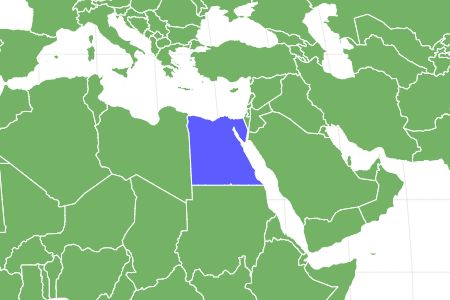Egyptian Mau
Felis catus
An ancient breed of domestic cat!
Advertisement
Egyptian Mau Scientific Classification
- Kingdom
- Animalia
- Phylum
- Chordata
- Class
- Mammalia
- Order
- Carnivora
- Family
- Felidae
- Genus
- Felis
- Scientific Name
- Felis catus
Read our Complete Guide to Classification of Animals.
Egyptian Mau Conservation Status
Egyptian Mau Facts
- Name Of Young
- Kittens
- Fun Fact
- An ancient breed of domestic cat!
- Estimated Population Size
- 7000 registered
- Most Distinctive Feature
- Spotted coat
- Temperament
- Loving, playful and clever
- Diet
- Carnivore
- Average Litter Size
- 6
- Common Name
- Egyptian Mau
- Origin
- Egypt
- Slogan
- An ancient breed of domestic cat!
- Group
- Shorthair
View all of the Egyptian Mau images!
The Egyptian Mau is a rare small-to-medium size short-haired breed of domestic cat that is naturally spotted on the tips of its fur.
Originating in Egypt, it is considered an ancestor of modern domestic cats as well as one of the fastest. The breed name “mau” means “cat” in Egyptian Arabic.
See all of our expert product reviews.
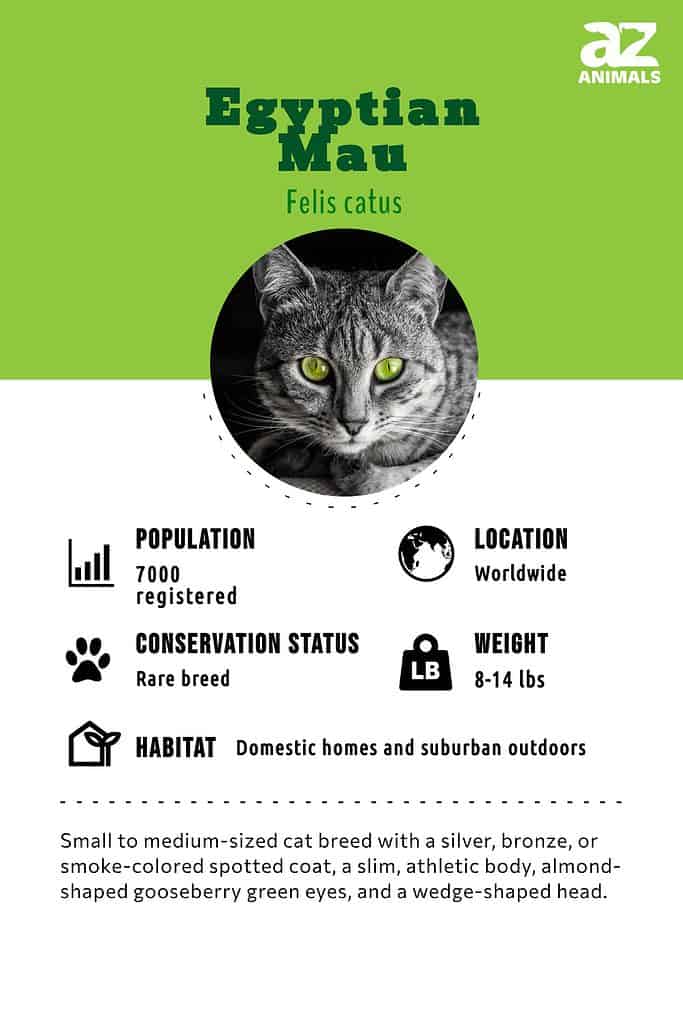
Egyptian Mau Traits: What to Know Before You Buy
- The Egyptian Mau is a descendant of the African wild cat.
- Physically, this breed is long and very muscled.
- It has a much longer pregnancy than other breeds, 73 days to be exact.
- It’s very fast, running more than 30mph (48km/h).
- The breed is so rare it is more common to find a mixed breed than a purebred one outside of Egypt.
Breed History
The Egyptian Mau, the lone naturally spotted breed of domestic cat in the world, has a rich and glorious history. Researchers have been able to learn much about this species from Egyptian art and actual mummified cats! Studies of cat mummies dated 200-600 B.C. found in Egyptian tombs prove that Egyptian Maus are descendants of Felis Libica Ocreata–a subspecies of the African Wildcat, which originated in Ethiopia.
The Egyptian Mau was worshipped by ancient Egyptian pharaohs and kings, dating back to the XIIth Dynasty (2800B.C.), where the sun god Ra was portrayed as a spotted cat slaying the serpent of darkness in the Egyptian Book of the Dead. Later in 950 B.C., the cult of Bastet worshipped the goddess Bast who was also depicted as a cat. It was because of this cult that the Egyptian Mau came to represent fertility, strength, and agility.
Besides being treasured members of society in ancient Egypt, these cats (which were abundant in number) served a practical purpose by keeping the rodent population down around Egyptian silos, as pests at that time attracted deadly cobras as well as African wildcats. Paintings on the walls of the tombs of Pharaohs also portrayed the cats as family members, draped across the shoulders of their owners, pampered, dressed in jewelry, and companions on outings like fishing in marshes. In death, these beloved creatures were mourned by being preserved as mummies, some even buried with mummified mice to feast on in the afterlife.
The Egyptian Mau gained popularity in Europe before WWII, and an exiled Russian princess, Natalie Troubetsky, brought the first three Egyptian Maus to the United States when she immigrated In December of 1956. Her cats, Jojo, Liza, and Baba, were used to populate the cattery she founded, dubbed “Fatima.” By 1958, she registered 10 cats with CFF. The cats she bred took off in popularity, and with other catteries breeding Egyptian Maus, this group became known as “traditionals” in cat societies. Another line, begun by a zookeeper in New Delhi, India, and brought to the U.S. by Jean Mill in 1980, is called the “Indian Line.”
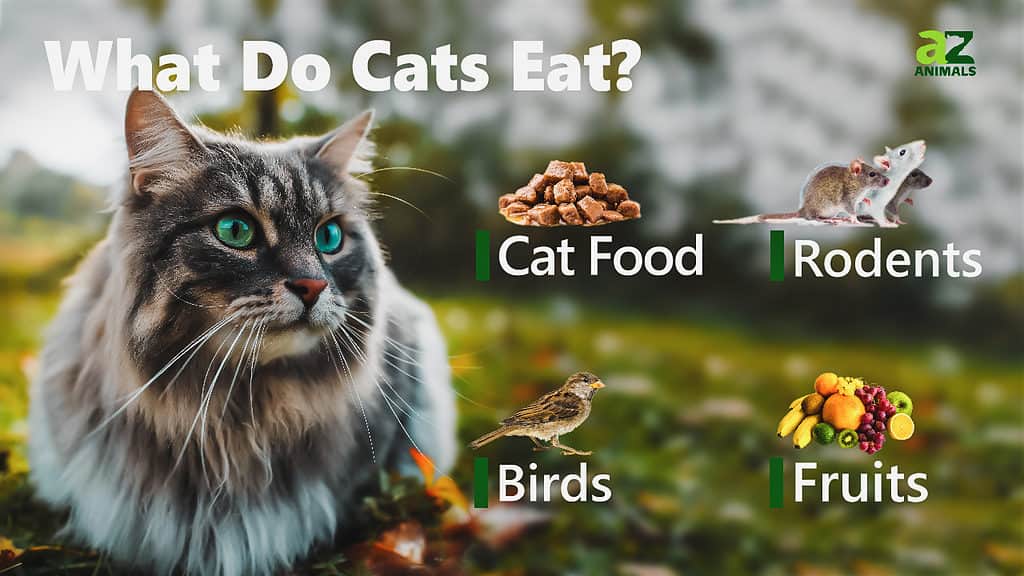
Personality
The Egyptian Mau personality is friendly, chatty, playful, and active. It has a social, balanced temperament with characteristics of loyalty, alertness, independence, patience, and intelligence. This social cat is physically gorgeous, strong, regal, and graceful and while it has an affectionate personality, it is a freedom-loving “four on the floor” (all feet on the ground) cat that does not enjoy being held or being a lap cat half the time or more. It can be possessive in temperament and cherish one human to be attached to above all others. Strange noises and abrupt movements make it skittish.
Health and Entertainment for your Egyptian Mau
See all of our expert product reviews.
This breed is very vocal and musical per its breed name Mau, meaning “cat.” It may chirp, trill, chortle, and make other unusual sounds in response to stimulation. Another common behavior in this breed is the “wiggle-tail” in which it twitches its tail, shaking it like it’s spraying territory although it does not release urine.
This breed can be territorial with other pets but can learn to get along. It does however enjoy families, especially those with older children. It is shy around strangers.
It has gooseberry green eyes which can change to turquoise depending on its temperament.
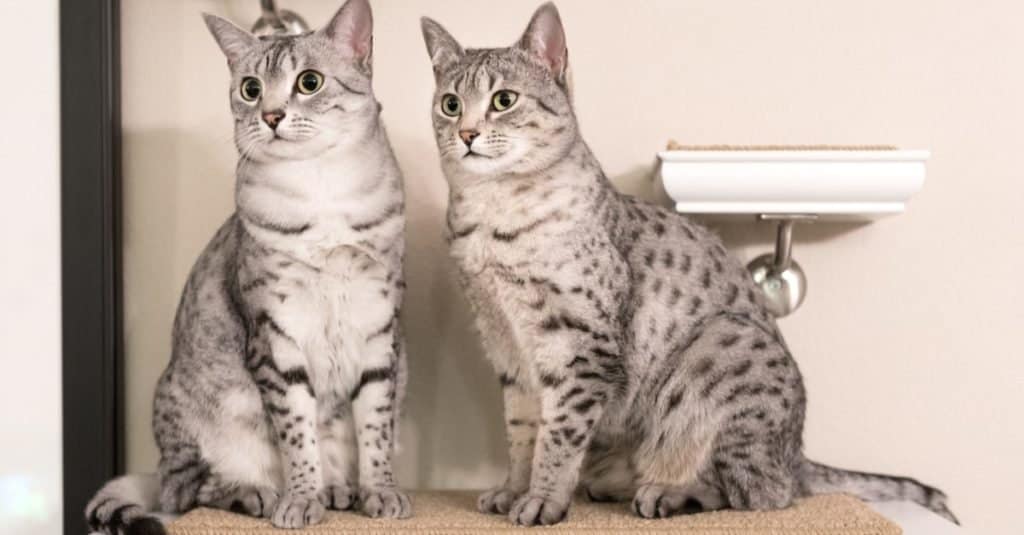
©Sarah Fields Photography/Shutterstock.com
Size and Weight
The Egyptian Mau is small to medium in size with short to medium silky fur and a long body. It has the slender elegance of a Siamese with the density of a Burmese, overall resembling the Abyssinian but with more length, muscle, shapeliness, distinct curves, and height. It is often confused for an Ocicat, which is a mixture of an Abyssian and an Egyptian Mau and retains the spotted fur.
Both sexes are 8-14 inches in height, with male Egyptian Maus being larger than females. Males weigh 8-14 lbs on average and females weigh 6-10 lbs on average. Kittens reach full maturity at about 18 months and weigh about 7-9lbs on average, reaching their full weight later.
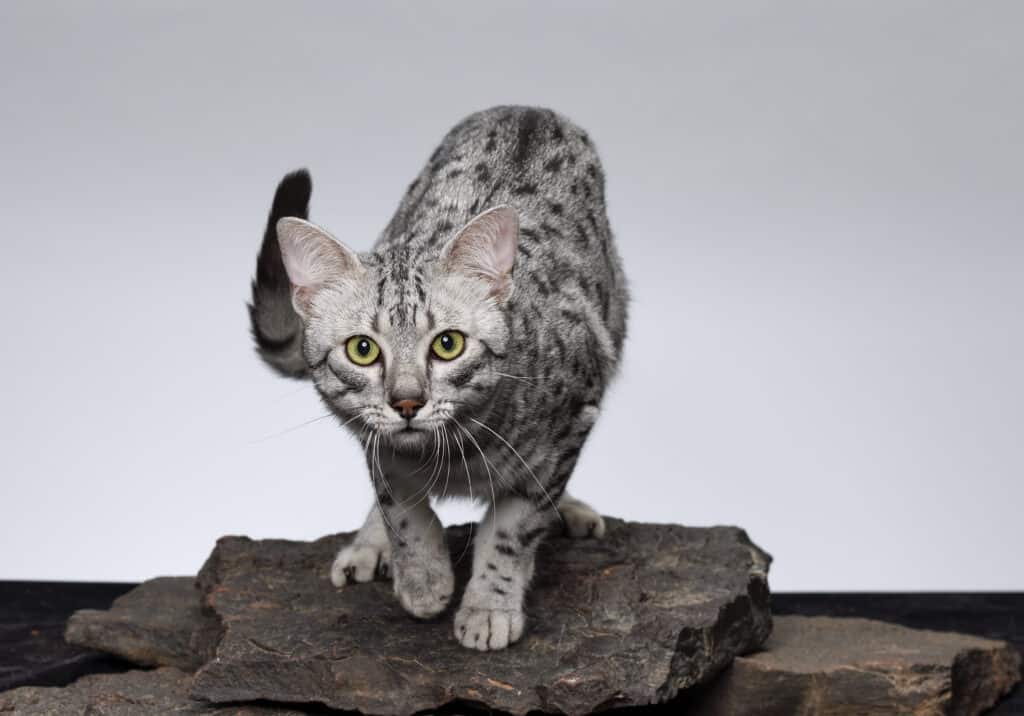
©iStock.com/Thomas Leirikh
Price
The price of an Egyptian Mau depends on whether you are getting a purebred or a mixed breed as well as its age and where you get it from. If you get Egyptian Mau kittens from a breeder, they can each cost anywhere from $1,800-2,500 on the high end and $600-1,200 on average depending on color, breed registration, and other characteristics.
However, there are Egyptian Mau rescues in the U.S. where you can find purebred and mixed breed kittens and adult cats and pay the standard adoption fee.

©COULANGES/Shutterstock.com
Kittens
These kittens all have green eyes, but amber is naturally occurring in kittens and young adults up to 18 months of age. They can cost as much as $1,200. If you are looking for a female for breeding, it can cost up to $2,000. Ideally, it would be best if you chose a reputable breeder with a healthy line and a written health guarantee to avoid issues, some of which can appear at a young age.

Y
ou should choose a reputable breeder with a healthy line and a written health guarantee if seeking to purchase an Egyptian Mau kitten.©Vivienstock/Shutterstock.com
Lifespan
The lifespan of these cats ranges from 9 to 20 years, but 12-16 on average. Although it’s generally very healthy, it can be prone to heart disease, urate urolithiasis, pyruvate kinase deficiency, and leukodystrophy. It is more sensitive to temperature than other breeds and enjoys very warm temperatures. It is more sensitive to medicines and anesthesia than other breeds as well.
Egyptian Mau Breed vs. Mixed
Some characteristics of a purebred cat are as follows:
- A rounded, triangular-shaped head
- Medium-to-large softly shaped, black-tipped, tufted ears
- Large, almond-shaped “gooseberry green” eyes with a somewhat worried expression
- Spotted tabby markings
- A paler underside
- A cheetah-like walk
- A back stripe running from head to tail
- An “m” or scarab beetle marking on its forehead
- Two “mascara lines” on each side of their cheeks
- The front legs are slightly longer than the back
- Thin, long tail with classic black tip
These cats are street cats in Egypt and rare everywhere else. An Egyptian Mau mixed breed is often a cross between an Egyptian Mau and a shorthair domestic cat rather than another purebred. Its breed name as a cross is an Egyptian Mau mix.
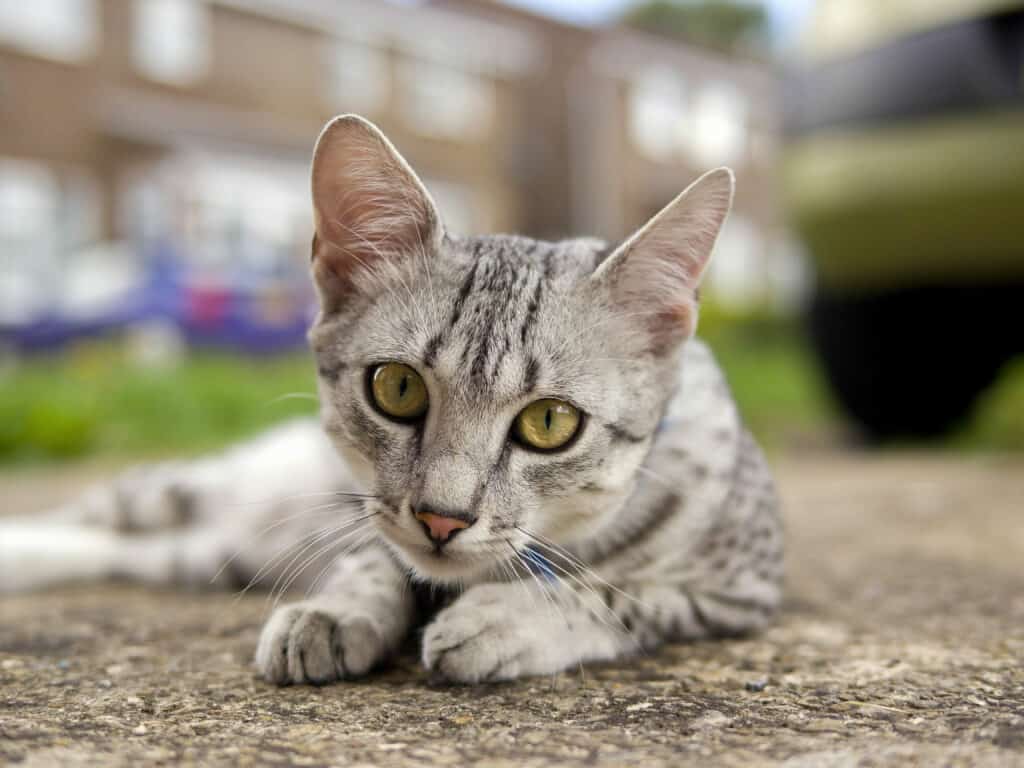
©iStock.com/Tbowerman
Types of Egyptian Mau Cats and Colors
These cats come in three main colors for show quality:
- Silver with charcoal spotting(most common)
- Bronze with black or dark brown spotting
- Smoke with black spotting
On the other hand, pet-quality cats have other colors which are diluted rather than natural, including blue silver, blue smoke, blue-spotted, solid black, and blue (or pewter). Ordered from the most common to the least, the colors are silver, bronze, smoke, black, caramel, and blue. Black and blue Egyptian Maus cannot be show-quality but can be used for breeding.
View all 117 animals that start with EEgyptian Mau FAQs (Frequently Asked Questions)
Are Egyptian Maus herbivores, carnivores, or omnivores?
Egyptian Maus are Omnivores, meaning they eat both plants and other animals.
What Kingdom do Egyptian Maus belong to?
Egyptian Maus belong to the Kingdom Animalia.
What phylum to Egyptian Maus belong to?
Egyptian Maus belong to the phylum Chordata.
What class do Egyptian Maus belong to?
Egyptian Maus belong to the class Mammalia.
What family do Egyptian Maus belong to?
Egyptian Maus belong to the family Felidae.
What order do Egyptian Maus belong to?
Egyptian Maus belong to the order Carnivora.
What type of covering do Egyptian Maus have?
Egyptian Maus are covered in hair.
What genus do Egyptian Maus belong to?
Egyptian Maus belong to the genus Felis.
How many babies do Egyptian Maus have?
The average number of babies an Egyptian Mau has is 6.
What is an interesting fact about Egyptian Maus?
Egyptian Maus are an ancient breed of domestic cat!
What is the scientific name for the Egyptian Mau?
The scientific name for the Egyptian Mau is Felis catus.
Are Egyptian Maus good pets?
Yes, they are very good pets that tend to be attached to one particular human and enjoy families, especially older children.
How much does an Egyptian Mau cost?
The price of an Egyptian Mau can range anywhere from $600-2,000.
Do Egyptian Maus like to be held?
Although Egyptian Maus are affectionate, they mostly do not enjoy being held because it means their legs and rear are not on the ground.
Are Egyptian Maus lap cats?
Not particularly. They are affectionate but independent cats.
How long do Egyptian Maus live?
Their lifespan is typically 12-16 years but can be as much as 20 years.
Thank you for reading! Have some feedback for us? Contact the AZ Animals editorial team.
Sources
- Wikipedia, Available here: https://en.wikipedia.org/wiki/Egyptian_Mau
- Kitty Wise, Available here: https://kittywise.com/egyptian-mau/
- Catspro, Available here: https://catspro.com/egyptian-mau-2.html
- Pet Coach, Available here: https://www.petcoach.co/breed/egyptian-mau/
- Pet Guide, Available here: https://www.petguide.com/breeds/cat/egyptian-mau/
- All About Cats, Available here: https://allaboutcats.com/cat-breeds/egyptian-mau
- Cat Breeds List, Available here: https://www.catbreedslist.com/all-cat-breeds/egyptian-mau.html
- Vetstreet, Available here: http://www.vetstreet.com/cats/egyptian-mau
- Cat Fanciers Association, Available here: https://cfa.org/egyptian-mau/
- Hills Pet, Available here: https://www.hillspet.co.uk/cat-care/cat-breeds/egyptian-mau

